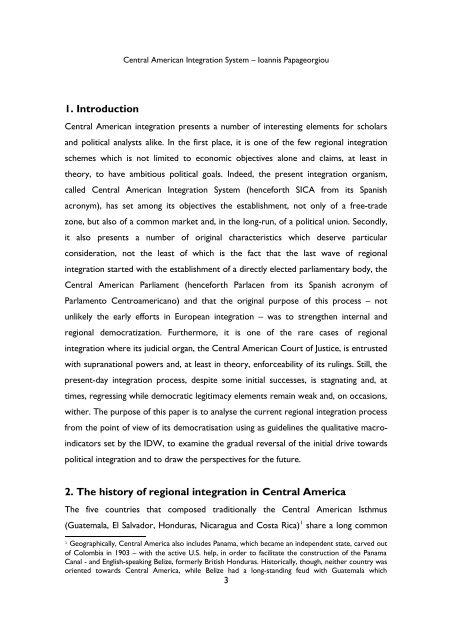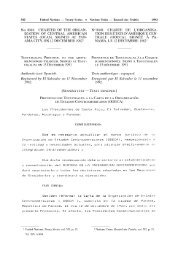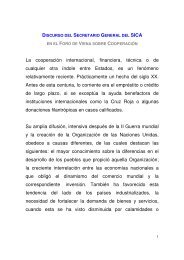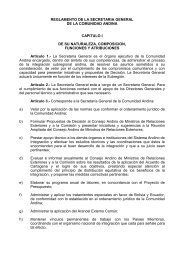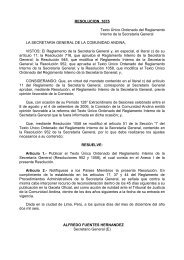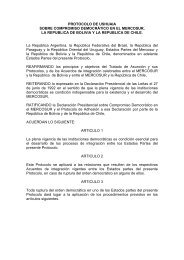Central American Integration System â Ioannis Papageorgiou
Central American Integration System â Ioannis Papageorgiou
Central American Integration System â Ioannis Papageorgiou
You also want an ePaper? Increase the reach of your titles
YUMPU automatically turns print PDFs into web optimized ePapers that Google loves.
<strong>Central</strong> <strong>American</strong> <strong>Integration</strong> <strong>System</strong> – <strong>Ioannis</strong> <strong>Papageorgiou</strong><br />
1. Introduction<br />
<strong>Central</strong> <strong>American</strong> integration presents a number of interesting elements for scholars<br />
and political analysts alike. In the first place, it is one of the few regional integration<br />
schemes which is not limited to economic objectives alone and claims, at least in<br />
theory, to have ambitious political goals. Indeed, the present integration organism,<br />
called <strong>Central</strong> <strong>American</strong> <strong>Integration</strong> <strong>System</strong> (henceforth SICA from its Spanish<br />
acronym), has set among its objectives the establishment, not only of a free-trade<br />
zone, but also of a common market and, in the long-run, of a political union. Secondly,<br />
it also presents a number of original characteristics which deserve particular<br />
consideration, not the least of which is the fact that the last wave of regional<br />
integration started with the establishment of a directly elected parliamentary body, the<br />
<strong>Central</strong> <strong>American</strong> Parliament (henceforth Parlacen from its Spanish acronym of<br />
Parlamento Centroamericano) and that the original purpose of this process – not<br />
unlikely the early efforts in European integration – was to strengthen internal and<br />
regional democratization. Furthermore, it is one of the rare cases of regional<br />
integration where its judicial organ, the <strong>Central</strong> <strong>American</strong> Court of Justice, is entrusted<br />
with supranational powers and, at least in theory, enforceability of its rulings. Still, the<br />
present-day integration process, despite some initial successes, is stagnating and, at<br />
times, regressing while democratic legitimacy elements remain weak and, on occasions,<br />
wither. The purpose of this paper is to analyse the current regional integration process<br />
from the point of view of its democratisation using as guidelines the qualitative macroindicators<br />
set by the IDW, to examine the gradual reversal of the initial drive towards<br />
political integration and to draw the perspectives for the future.<br />
2. The history of regional integration in <strong>Central</strong> America<br />
The five countries that composed traditionally the <strong>Central</strong> <strong>American</strong> Isthmus<br />
(Guatemala, El Salvador, Honduras, Nicaragua and Costa Rica) 1 share a long common<br />
1<br />
Geographically, <strong>Central</strong> America also includes Panama, which became an independent state, carved out<br />
of Colombia in 1903 – with the active U.S. help, in order to facilitate the construction of the Panama<br />
Canal - and English-speaking Belize, formerly British Honduras. Historically, though, neither country was<br />
oriented towards <strong>Central</strong> America, while Belize had a long-standing feud with Guatemala which<br />
3


